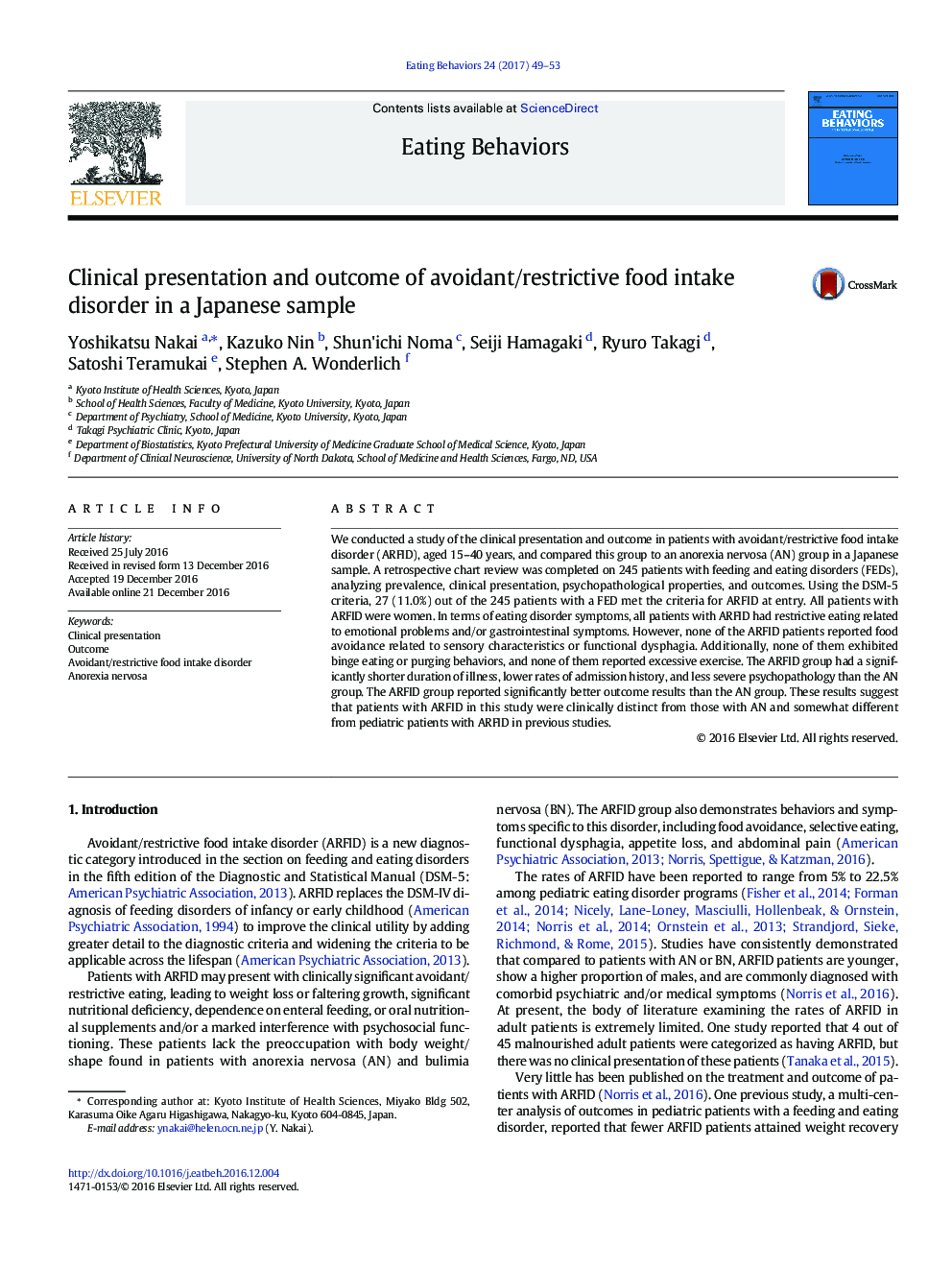| Article ID | Journal | Published Year | Pages | File Type |
|---|---|---|---|---|
| 5038755 | Eating Behaviors | 2017 | 5 Pages |
â¢Clinical presentation and outcome in avoidant/restrictive food intake disorderâ¢ARFID patients were clinically distinct from anorexia nervosa patients.â¢ARFID patients in this study were somewhat different from pediatric ARFID patients.
We conducted a study of the clinical presentation and outcome in patients with avoidant/restrictive food intake disorder (ARFID), aged 15-40Â years, and compared this group to an anorexia nervosa (AN) group in a Japanese sample. A retrospective chart review was completed on 245 patients with feeding and eating disorders (FEDs), analyzing prevalence, clinical presentation, psychopathological properties, and outcomes. Using the DSM-5 criteria, 27 (11.0%) out of the 245 patients with a FED met the criteria for ARFID at entry. All patients with ARFID were women. In terms of eating disorder symptoms, all patients with ARFID had restrictive eating related to emotional problems and/or gastrointestinal symptoms. However, none of the ARFID patients reported food avoidance related to sensory characteristics or functional dysphagia. Additionally, none of them exhibited binge eating or purging behaviors, and none of them reported excessive exercise. The ARFID group had a significantly shorter duration of illness, lower rates of admission history, and less severe psychopathology than the AN group. The ARFID group reported significantly better outcome results than the AN group. These results suggest that patients with ARFID in this study were clinically distinct from those with AN and somewhat different from pediatric patients with ARFID in previous studies.
